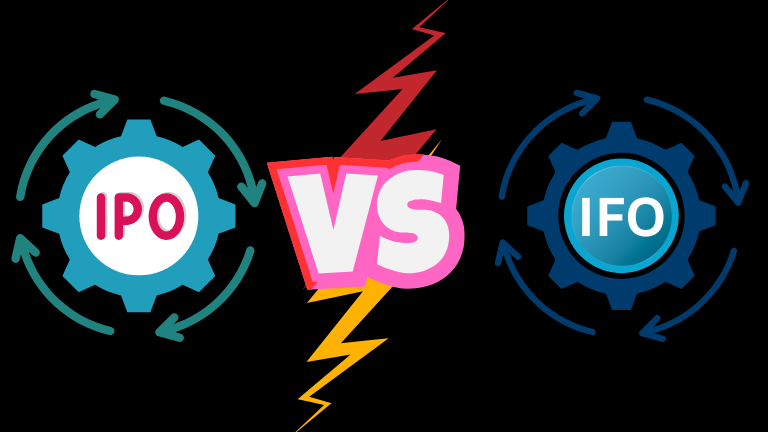What are the key differences between IPO Vs FPO, and how do they affect an investor’s decision-making? In the world of capital markets, public offerings are among the most effective tools companies use to raise funds. But while both Initial Public Offerings (IPOs) and Follow-on Public Offerings (FPOs) may sound similar, they play distinctly different roles in a company’s growth story and in investor portfolios.
With the global stock markets witnessing a steady stream of both IPOs and FPOs, investors especially retail participants need to understand what sets these two fundraising mechanisms apart.
IPO: The First Leap into Public Markets
An Initial Public Offering (IPO) marks the first time a private company sells its shares to the public and becomes listed on a stock exchange. It is a crucial milestone, often associated with ambitious expansion plans, debt restructuring, or simply unlocking shareholder value.
“An IPO transforms a privately held entity into a publicly traded one, offering transparency, regulatory oversight, and new growth capital,” says financial analyst.
Commonly used by startups reaching maturity or large private firms seeking scale, IPOs are regulated by financial authorities such as the Securities and Exchange Commission (SEC) in the U.S. or SEBI in India. The company typically sets its share price through a book building process or fixed price model, and investors range from large institutions to retail traders.
FPO: Raising Capital Post Listing
In contrast, a Follow-on Public Offering (FPO) occurs after a company has already gone public. This fundraising method allows a listed company to issue additional shares to the public, either to raise more capital or enable existing shareholders to sell their stakes.
FPOs come in two forms:
- Dilutive FPOs, where new shares are issued resulting in a larger share base.
- Non-dilutive FPOs, where existing shareholders offload their stock, with no impact on the total share count.
These offerings are often used to repay debt, fund new projects, or allow early investors to exit partially or fully.
IPO vs FPO: Understanding the Key Differences in Market Offerings
Following are a the few differences between IPO Vs FPO:
-
Company Status
-
IPO: Issued by an unlisted (private) company.
-
FPO: Issued by an already listed (public) company.
-
-
Purpose
-
IPO: To raise initial capital for expansion, operations, or debt repayment.
-
FPO: To raise additional capital, reduce debt, or allow promoter exit.
-
-
Risk Profile
-
IPO: Higher risk due to no prior market performance or trading history.
-
FPO: Lower risk as company performance and financials are already public.
-
-
Pricing Method
-
IPO: Based on future projections and company valuation models.
-
FPO: Market-driven pricing, reflecting current performance and demand.
-
-
Investor Sentiment
-
IPO: Driven by expectations, hype, and market buzz.
-
FPO: Based on real data, earnings track record, and stock performance.
-
Which Offering Suits Investors Best?
IPOs have historically drawn attention for their potential to deliver multibagger returns. However, they also come with greater risk, particularly when the company has limited operating history or profitability.
FPOs, on the other hand, provide a clearer picture of a company’s operational health and market behavior. With more public data available, investors can make better informed decisions.
“IPOs are like launching into the unknown, while FPOs give you a track record to lean on,” explains Priya Sharma, a Mumbai based portfolio manager.
For new or risk averse investors, experts recommend starting with FPOs. Those with a higher risk appetite may explore IPOs but with caution, research, and long term commitment.
Conclusion: Two Sides of the Same Capital Raising Coin
While IPOs and FPOs are both designed to raise capital, they cater to companies at different stages of maturity and offer unique opportunities to investors.
In an era of rapidly evolving markets and shifting investor behavior, being able to distinguish between these offerings isn’t just beneficial—it’s essential.
As companies continue to tap into public markets for funding, the ability to decode financial instruments like IPOs and FPOs will separate the well-informed investor from the speculative gambler.
FAQs: IPO vs FPO
Q1. What is the main difference between an IPO and an FPO?
A: An IPO is a company’s first public share issue, while an FPO is issued after the company is already listed.
Q2. Which is safer to invest in – IPO or FPO?
A: FPOs are generally safer, as the company has a public track record. IPOs carry higher risk but also potential for high returns.
Q3. Can I apply for both IPOs and FPOs through my trading app?
A: Yes, most trading platforms allow you to invest in both.
Q4. Are IPOs always profitable?
A: Not always. Some IPOs perform well, others may underperform. Research is key.
Q5. Why do companies issue FPOs?
A: To raise more funds, reduce debt, or allow major shareholders to sell part of their stake.
Q6. How is the price of shares decided in IPOs and FPOs?
A: IPO pricing is based on valuation and future potential; FPO pricing reflects current market value.
Q7. Should new investors start with IPOs or FPOs?
A: FPOs may be better for beginners due to lower risk and more available information.
Disclaimer
The content provided on this blog is for informational purposes only and should not be considered as financial or investment advice. The information shared in the articles, including details about IPOs and FPOs, is based on publicly available sources, and while we strive to offer accurate and up-to-date information, we do not guarantee its completeness or accuracy.
Investing in the stock market involves risk, including the potential loss of principal. We recommend that you consult with a professional financial advisor or conduct your own research before making any investment decisions. The opinions expressed in the articles are those of the author(s) and do not reflect the views of any company or organization.
